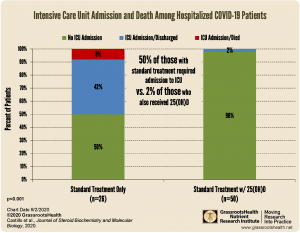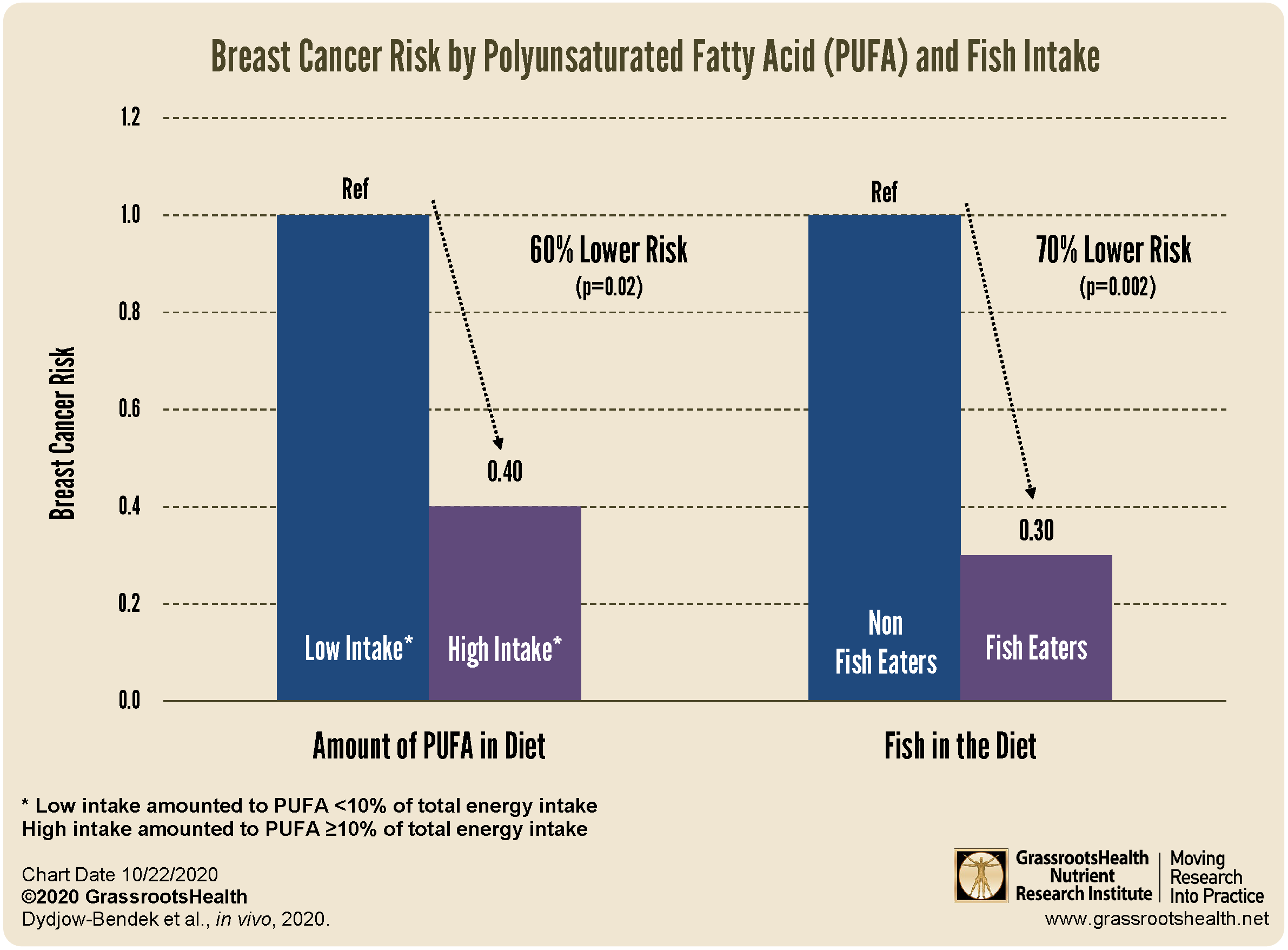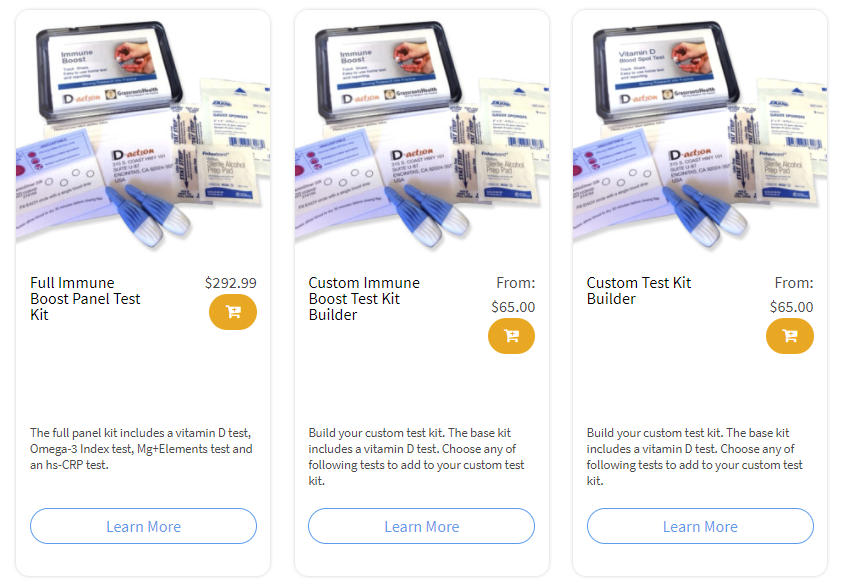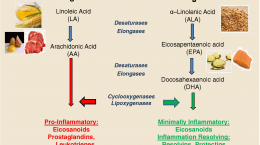Published on October 28, 2020
A case-controlled study finds significant associations between the amount of fish and polyunsaturated fatty acids in the diet, and the risk of getting breast cancer
 This October for Breast Cancer Prevention Month, GrassrootsHealth has remained focused on the importance of nutrient intake and levels for overall cancer prevention and survival. Many studies have supported the role of vitamin D in breast cancer prevention and outcomes, with some of our latest posts revisiting the importance of having vitamin D levels of at least 60 ng/ml (150 nmol/L) for breast cancer prevention. We also reviewed a study showing that omega-3 fatty acid intake from supplements may reduce the risk of breast cancer and also reduce cancer-promoting inflammation.
This October for Breast Cancer Prevention Month, GrassrootsHealth has remained focused on the importance of nutrient intake and levels for overall cancer prevention and survival. Many studies have supported the role of vitamin D in breast cancer prevention and outcomes, with some of our latest posts revisiting the importance of having vitamin D levels of at least 60 ng/ml (150 nmol/L) for breast cancer prevention. We also reviewed a study showing that omega-3 fatty acid intake from supplements may reduce the risk of breast cancer and also reduce cancer-promoting inflammation.
With diet being an easily modifiable risk factor associated with cancer, several studies, such as the one reviewed below, have considered specific differences within the diets of women who are diagnosed with breast cancer and those who are cancer-free to see what might have the greatest effect on overall breast cancer risk.
Could fish intake be associated with breast cancer risk?
For a case-controlled study in Poland, Dydjow-Bendek et al. enrolled 201 newly diagnosed female breast cancer patients between the ages of 50 and 69 years, and 201 women of the same age without cancer to determine if dietary fat and fish intake had any association with the chances of getting breast cancer. All women were interviewed about socio-demographic, clinical, lifestyle, and dietary characteristics, with a detailed dietary intake questionnaire. The focus of the analysis was on the amount of polyunsaturated fats (PUFAs) in the total diet, as well as the omega-3 to omega-6 intake ratio and total fish intake.
What were the results of the study?
The study found a significant association between a decreased risk of breast cancer and those women whose diet consisted of PUFAs comprising at least 10% of their total energy (caloric) intake, as well as women who included fish in their diet and whose omega-3 to omega-6 intake ratios were higher. Of the women diagnosed with breast cancer, 15.4% did not consume any fish at all compared to only 5% of women without breast cancer (p=0.001). In other words, women who ate more foods high in omega-3s, such as fish, had a lower risk of breast cancer compared to women who did not.
As illustrated in the chart above, women whose PUFA intake amounted to at least 10% of their total energy intake had a 60% lower risk of breast cancer compared to women who consumed less PUFAs, and women who ate fish had a 70% lower risk of breast cancer compared to women who did not eat fish.
Know Your Omega-3 Status
GrassrootsHealth offers several testing options to help measure the status of omega-3 and omega-6 fatty acids – the Omega-3 Index, AA:EPA Ratio, and Omega-6:Omega-3 Ratio. Learn more about these tests and the differences between them here. More information on how to improve these test results can be found here.
Are You Getting Enough Omega-3s and Other Nutrients?
Join the Breast Cancer Prevention Study to find out! Using the GrassrootsHealth Custom Kit Builder, you can create a test kit that measures the status of nutrients important to the regulation of inflammation (such as vitamin D, omega-3s, and magnesium), as well as your CRP level. Click here to build and order your test kit today – measure your status and take the steps necessary to improve them if needed; make an impact on your health today and for your future! When you know what your levels are, you can determine next steps to take and how much supplementation may be needed if you are not at your target levels.
Concerned specifically about your immune health? See if your immune system might be needing more vitamin D and other immune boosting nutrients by enrolling in the Immune Boost Project with the Full Immune Boost Panel (which includes tests for vitamin D, Omega-3 Index, magnesium, zinc, selenium, copper, and hsCRP), and get 10% off when you use coupon code BoostTen at checkout.
What Does it Take YOU to Get Your D to 40 ng/ml (100 nmol/L)?
Did you know your health could be greatly affected by making sure you have a vitamin D level of at least 40 ng/ml (100 nmol/L)? Help us help you.
STEP 1 – Do you know what your vitamin D level is? If not, be sure to test today to find out.
STEP 2 – Determine your target level. Are you at your target level? Experts recommend a level of at least 40-60 ng/ml (100-150 nmol/L).
STEP 3 – Need to boost your level? Use the D*calculator to see how much vitamin D it may take to reach your target. Opt for the Loading Dose for a quicker boost.
STEP 4 – Optimize how your body absorbs and utilizes vitamin D with co-nutrients and these simple steps.
STEP 5 – Re-Test! This is an important step to make sure you have reached your target level, and to ensure you are not taking too much! Re-testing after 3-4 months is recommended.
STEP 6 – Adjust, Repeat…
Give your immune system the nutrients it needs to support a healthy you and protect yourself from unnecessary diseases, especially COVID-19.
NEWS ALERT
 The first Randomized Controlled Trial on vitamin D and COVID-19 has shown a 96% lower risk of ICU admission for those receiving vitamin D (as 25(OH)D to quickly boost vitamin D blood levels) along with the standard treatment, compared to those receiving standard treatment alone.
The first Randomized Controlled Trial on vitamin D and COVID-19 has shown a 96% lower risk of ICU admission for those receiving vitamin D (as 25(OH)D to quickly boost vitamin D blood levels) along with the standard treatment, compared to those receiving standard treatment alone.
These results support many previous observational studies showing a relationship between vitamin D levels and intake and COVID-19 severity.
Review the Latest Nutrient Research for COVID-19
GrassrootsHealth Nutrient Research Institute has launched the new Immune Boost project with the use of our myData-myAnswers nutrient health system that nearly 15,000 people are already using for their health. Specific markers that influence immune health are suggested for testing as part of this project including:
- Vitamin D
- Omega-3 Index
- Essential elements magnesium, selenium, and zinc
- hsCRP
Our goal is to demonstrate how one can use the Nutrient Research Model established by Dr. Robert Heaney to show the effect of vitamin D serum levels of at least 40 ng/ml (100 nmol/L) on risk reduction for all ethnicities in the population. Status and intake of other nutrients will also be analyzed for any type of relationship to immune status and symptom severity. Join the project today!
Please let us know if you’re interested in helping sponsor this project.
Through GrassrootsHealth Nutrient Research Institute, you can also test your essential elements magnesium, copper, zinc and selenium, toxins such as lead, mercury and cadmium, as well as your omega-3 levels, inflammation levels and thyroid stimulating hormone (TSH) level. Find out your levels today! Log on to the test selection page (click the link below) to get your tests and see for yourself if your levels can be improved.
Make sure you track your results before and after, about every 6 months!
Click Here to Access the Test Page
How can I track my nutrient intake and levels over time?
To help you track your supplement use and nutrient levels, GrassrootsHealth has created the Personal Health Nutrient Decision System called
For each specific supplement, you can track what days you take it, how much, and many other details. This will help you know your true supplemental intake and what patterns of use work for you to reach and maintain optimum nutrient levels. Check it out today!










